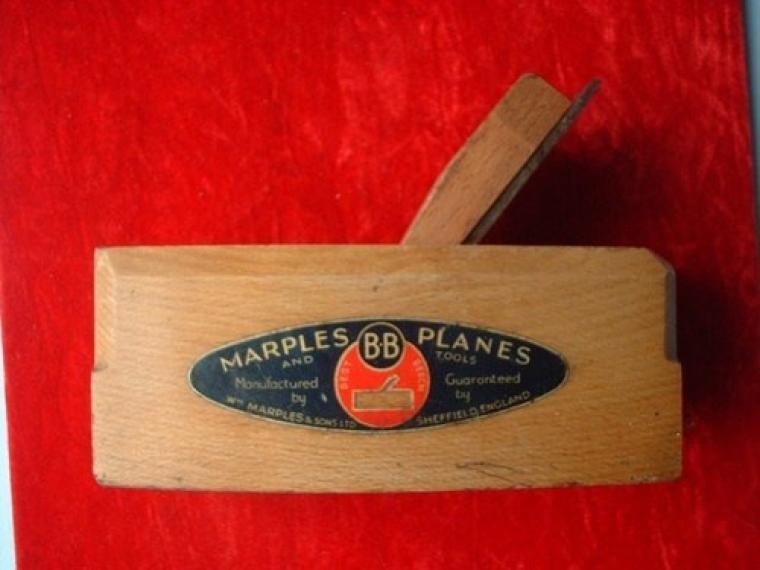Wooden Smoothing Pane
Wow, what a hectic week. Much of my time has been taken up with fitting an Accoya Conservatory here in Devon. Always good to be away from the workshop for a while on a site fit. One bad thing is some things do get neglected back at HQ. For those who have a slower response than normal to calls and e-mails I’m sorry, normal service should be resumed next week.
Because of time away from the workshop there has been no time to finish the #4 refurb. To ease the pain of not finishing I indulged in a bit of retail therapy via e-bay. So far there is only one wooden plane in the tool chest, a Marples toothing plane that was purchased with the view to try a toothed bench top (when the bench get’s built). After some general browsing I found this wooden smoother and was able to secure it for a modest £15.00 including delivery.
These simple wooden planes were once the only show in town for day to day use. Metal planes were generally limited to the English infill type and were reserved for fine finishing only. With the advent of the American Bailey pattern metal plane the wooden planes slowly faded away. I look forward to contrasting the performance of the wooden plane and my #4. I will leave you with two quotes from the perspective of an Edwardian Joiner on the pros and cons of the wooden and Bailey type planes
The common Wooden Stock plane is comparatively low in price, and will stand rough usage better than either of the others, being in fact practically indestructible. It works rapidly and easily, and can be adjusted by means of the cover iron to suit hard or softwoods. On the other hand it will not produce so highly finished surface as a metal plane; and it requires frequent shooting, and remouthing occasionally, to keep it in good condition.“ The American type has for it’s chief recommendation cheapness and readiness of adjustment. It is easy to work in consequence of it’s lightness, but this quality also acts detrimentally in causing “chatter” which prevents production of so highly finished surface as the English form is capable of. However, its general results are higher than those of the common wood plane. Many ingenious time-saving attachments make it a rapid worker, but it is very fragile, and will seldom survive an accidental fall from the bench”
George Ellis 1902 Modern Practical Joinery

